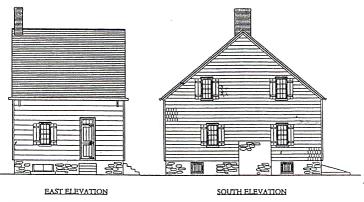|
HVVA
NEWSLETTER, August 2004, Part Two FROM THE JOURNAL Continued Sunday, July 18, 2004 Five members of HVVA toured three 18th century Dutch house museums and one Dutch barn in Somerset County, central New Jersey, organized by Dennis Tierney (*) It is an area that was settled in the early 18th century by families with Dutch, English, Scottish and German roots. The three timber frame houses we visited share Dutch features, especially in their exposed anchorbeam construction. They also share a floor plan that is characteristic of Long Island and the lower Hudson Valley. In this two-room deep plan, the long anchorbeam is supported by a partition wall. John Stevens wrote a detailed report for this newsletter (January 2002, Vol. 4, No. 1, see also December 2001, Vol. 3, No. 8) after HVVA had toured three 18th century houses being preserved by the Meadows Foundation in Somerset County. The report includes examples of timber framing and floor plans from a number of houses on Long Island and in New Jersey and begins to describe the mixture of Dutch and English timber framing that led to the development of an American vernacular style in the lower Hudson Valley. Carla Ciela, who is doing a study of barns in western New Jersey, contributed the drawing of a Dutch/English framed barn from Holland Township that helps fill out the distribution of these hybrid frames.
The Jacobus Vanderveer House in Bedminister Township was visited first. Begun in 1770 with an early 19th century Federal addition, it has recently undergone a $700,000 restoration and is presented as “typical of the Dutch frame houses that dotted the countryside before the Revolution.” It began as a two-room side-hall frame house. The four-bay rooms are framed on the interior with Dutch anchorbents and the hall was attached to the main frame with two longitudinal beams.
In the cellar of the Vanderveer House, the framing of the main floor
utilizes the stone base of the hearths to support a carrier beam with
joists, an English practice. The corner fireplace, common in Somerset
County, some believe can be traced to the 17th century The 1752 Dirck
Gulick stone house The Group next visited the 1752 Dirck Gulick stone house in Montgomery Township that is the headquarters of the Van Harlingen Historical Society. Like the Vanderveer House it also began as a two room side hall with a Federal addition. The anchorbeams span the full width of the two room deep house. It has been restored to its early 9th century form with two front doors, a common arrangement in New Jersey. The house was dendro dated by Rutgers University. CORRECTION The following information was submitted
by Ursula Brecknell of Belle Mead, New Jersey to correct the description
of The Dirk Gulick stone house in Montgomery Township, Somerset County,
New Jersey.
The 1770-1790 D’Altrui
4-bay Dutch barn Hillsborough,
Somerset County, NJ.
The group drove past the Wyckoff Dutch barn that is slated to be moved to the Wykoff house museum in Brooklyn, and went on to examine the D’Altrui 4-bay Dutch barn 1770-1790, River Road, Hillsborough, NJ. This well preserved building is in active use. It has lowered anchorbeams in two bays, a modification of the true form that is often found in mid Hudson examples. It allows for increased storage of hay and the loss of threshing floor. The barn is especially interesting for its shingled siding. Some of the original “face-nailed” shingles have survived on the front gable end. Shingle siding was once common on houses and barns in Somerset County. No wooden hinged wagon doors have been found on barns in New Jersey, according to Carla Cielo.
Lastly, the group was given a tour of the Wyckoff-Garretson House
by Mark Else, past The 1730
Wyckoff/Garretson House
The original 2-room side-hall house has been dendro dated to 1730.
It has a hybrid frame with English jowelled posts on the external
bents, and anchorbeams on the internal bents. It originally had a
jambless fireplace. Of the three houses visited in Somerset County
this was the only example that had this Dutch feature. Like many of
the stone houses in the Mid and Upper Hudson Valley, the Wyckoff house
had a cellar jambed fireplace below the jambless hearth with a narrow
by-pass chimney. The anchorbeams of the Wyckoff house were the longest,
36-feet, of the houses visited and the ceiling, 8’3”,
was the tallest.
FROM THE EDITOR; Keith Cramer, of the Dutch Barn Preservation Society, has been putting together the Annual Barn Conference to be held at the Mabee Farm Museum, Rotterdam Junction, Schenectady County Saturday, October 2. It will focus on the documentation of barns and will include our Dutch friends from Arnhem and a dendrochronologist from Columbia University. We expect it to be as successful as last year's conference in Ancramdale. September 19 will be Sunday on the Farm at the Mabee Farm, a well attended event with lots of activities and a table where the DBPS and HVVA can sell their wares and meet the public. The Palatine Farmstead Museum in Rhinebeck, Dutchess County, that some HVVA members have been active with, has received a $25,000 matching grant from NY State. This will be used for doing archaeology and restoration of the back wall of the Neher\Elseffer house, hopefully beginning this fall. Aside from maintenance the volunteer work has concentrated on the front of the house, restoring its 1840 Greek Revival façade and rebuilding the stone retaining wall that separates the house from busy Highway 9, connecting Rhinebeck and Red Hook. Carla Cielo, with the help of Douge Eldridge, has organized the Saturday, September 18th HVVA Tour of Early Houses in the Newark, New Jersey area. These include the 1725 Plume House, the 1760 Sydenham House, the c1680 Rose Cottage, the 1797 Van Winkle House, the Van Riper House, the 1806 James Hay house, the pre 1790 Kingsland House and the 1700-1702 Giesen-Vreeland House or Nutley Womans Club. All but one of these Passaic River Valley houses, the Van Winkle house, were extensively documented by HABS (Historic American Building Survery) in the 1930’s and drawings and descriptions are available on the HABS internet site. Peter Sinclair, Editor Copyright © 2004. Hudson Valley Vernacular Architecture. All rights reserved. All items on the site are copyrighted. While we welcome you to use the information provided on this web site by copying it, or downloading it; this information is copyrighted and not to be reproduced for distribution, sale, or profit.
|
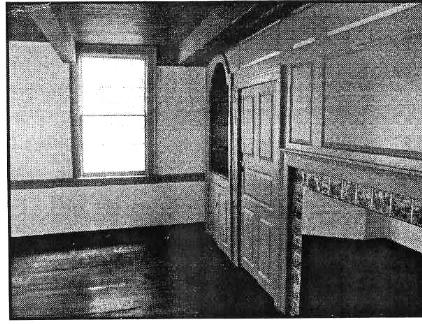 The
1770 Jacobus Vanderveer House
The
1770 Jacobus Vanderveer House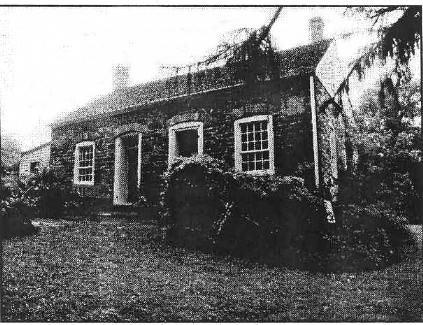 Swedish
colony established nearby on the Delaware River.
Swedish
colony established nearby on the Delaware River.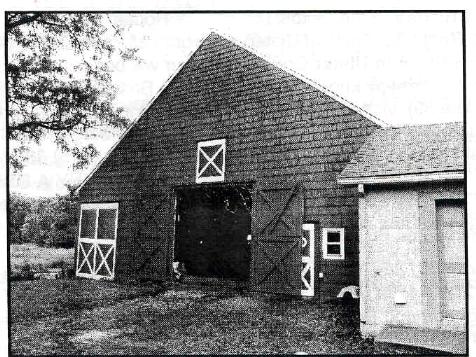
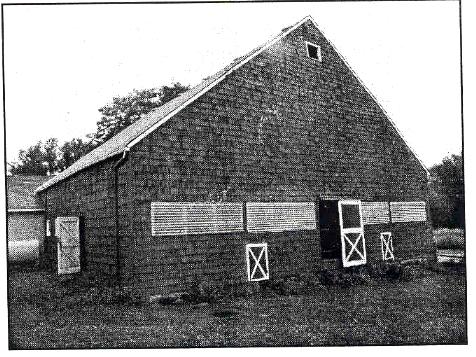
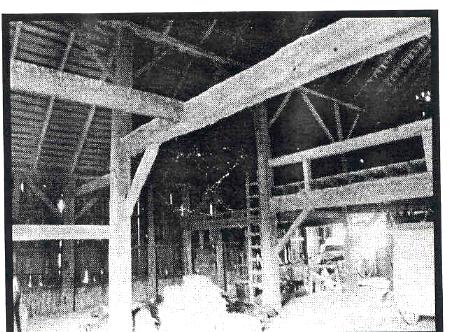
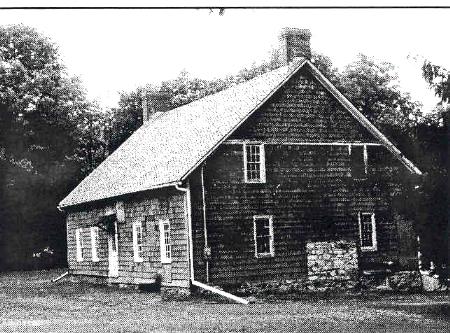 president
of the Meadows Foundation and closely involved with the study and
preservation of this early frame building. Restoration and repair
of the stone foundation has been completed but the house above remains
unfinished with its later layers removed, an ideal state for the student
of timber framing.
president
of the Meadows Foundation and closely involved with the study and
preservation of this early frame building. Restoration and repair
of the stone foundation has been completed but the house above remains
unfinished with its later layers removed, an ideal state for the student
of timber framing.